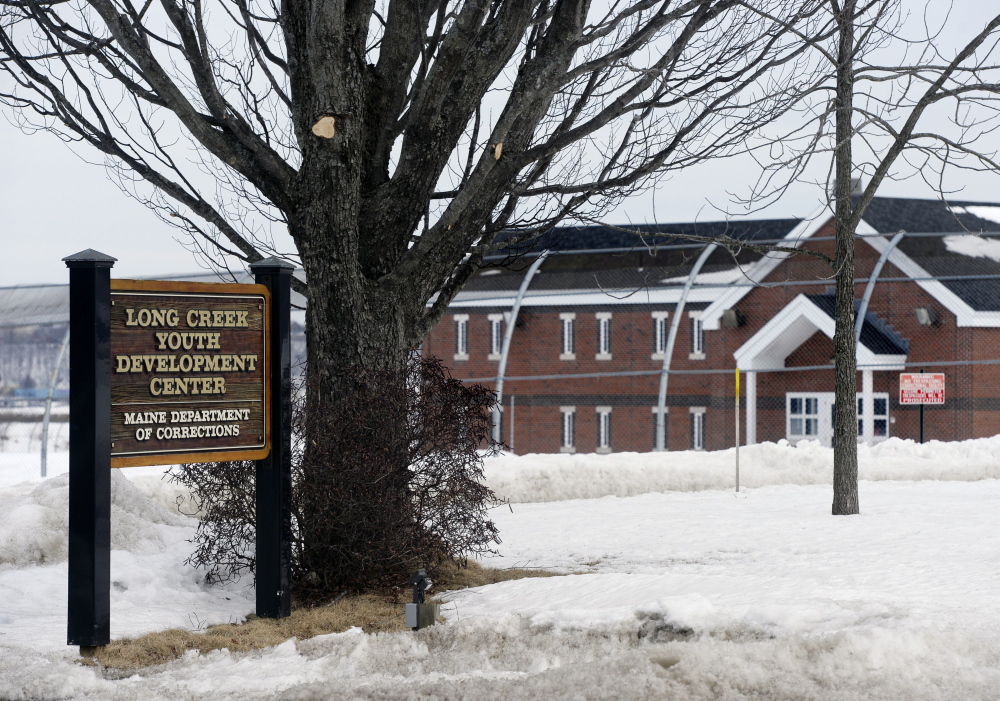The suicide late last year of a transgender boy at Long Creek Youth Development Center in South Portland has led to deep reflection over policies at the state’s only youth correctional center. Instead, it should raise questions about why we incarcerate youth at all.
Despite best efforts, the system isn’t working. It is time to close Long Creek, and target resources toward facilities and programs that are more successful in turning troubled youths into productive adults.
FEWER INMATES, NEW CHALLENGES
That’s not meant as a criticism of Long Creek, a facility with the right general philosophy on youth corrections, and with many talented and dedicated staff members.
But even the best youth prisons remove children from communities they should be learning to live in, and struggle to serve such a vulnerable and sensitive population.
The challenges start with the teenagers who end up at Long Creek.
The number of incarcerated youth in Maine fell from 318 in 1997 to 186 by 2013. The state’s other youth facility, Mountain View in Charleston, closed in 2015, after seeing a reduction in inmates from more than 100 at one time to nine.
Long Creek, where the average population was more than 100 just a few years ago, houses just around 80 teenagers today.
The state achieved those reductions by keeping kids out of the court system whenever possible and steering them toward community-based programs that offer alternative education and restorative justice, allowing kids to gain knowledge and skills and to make amends with the people and communities they harmed.
The teenagers who end up at Long Creek are the ones with the most challenging home lives, the ones with the most absent or overwhelmed parents, who can’t or won’t advocate for diversion or provide support through the process.
Increasingly, they are teenagers with mental health problems – post-traumatic stress disorder, attention deficit disorder, depression and others. They end up incarcerated because they aren’t receiving the treatment they need, or aren’t following through with the treatment they’ve been prescribed – otherwise, they would not have committed a crime.
CORRECTION, NOT TREATMENT
But Long Creek isn’t equipped to deal with them – it is a correctional facility, aimed at keeping juvenile inmates safe while addressing their conduct, not the mental health issues that led to the crime.
So inmates with mental health challenges are not being treated, and they need significant supervision, which puts stress on the staff. The staff then cannot dedicate enough time to others. As a result, few are getting the help they need.
It’s no coincidence that individual stays at Long Creek, which are based on an individual’s progress, are getting lengthier, keeping kids away from their families and communities, further alienating them from the life they’ll have to learn to live if they are going to be successful.
And it’s no surprise that many of the inmates in Long Creek are suffering.
Charles Maisie Knowles died on Nov. 1 of injuries he sustained when he hanged himself with a bedsheet on Oct. 29, raising questions about how he was treated as a transgender boy, and how his mental illness was being addressed.
Around the same time, there was at least one other suicide attempt at Long Creek, and subsequent reports have noted an epidemic of self-harm at the facility.
Long Creek’s Board of Visitors, which is appointed by the governor and has oversight authority, reviewed Knowles’ suicide. The report notes the central problem: “(Long Creek) is not medically equipped to deal with the delicate needs of these vulnerable youth.” Without changes, the report said, more harm will come to inmates.
But no new policy or program can change the fact that Long Creek is a correctional facility, unequipped to treat most of the young people in its care.
The state should close Long Creek and send those kids – most of whom have committed only misdemeanors – to community-based programs. It should create a much smaller facility to house the rare teenager who legitimately needs incarceration.
And it should use the savings – roughly $200,000 per inmate – to fill the regional and programmatic gaps in care that have been allowed to grow across Maine.
The state should shut down a broken system that is helping no one, and replace it with one that gives troubled youth a better chance.
Send questions/comments to the editors.



Comments are no longer available on this story